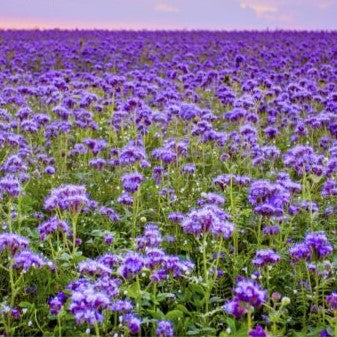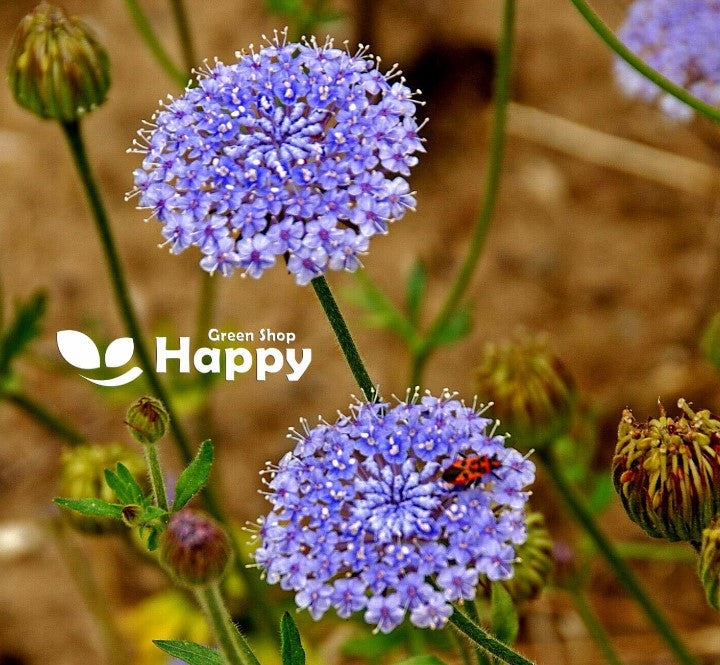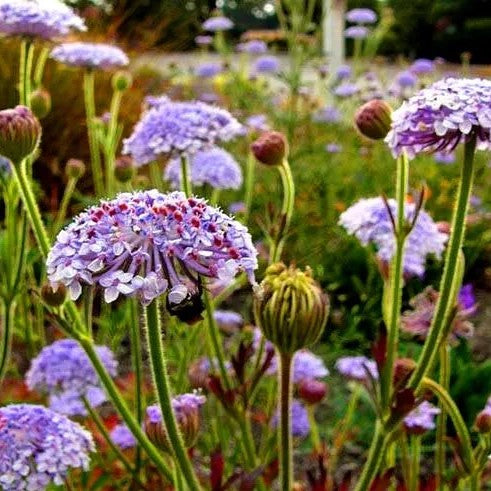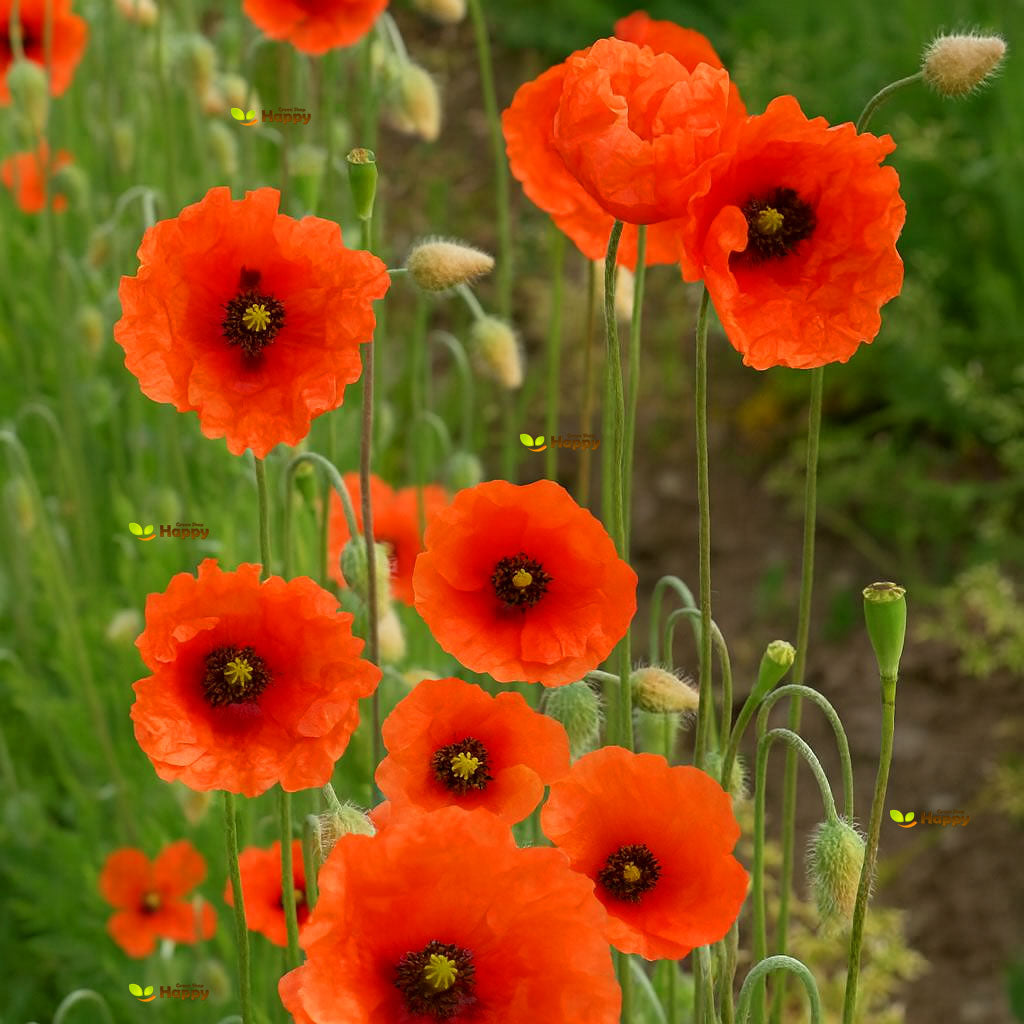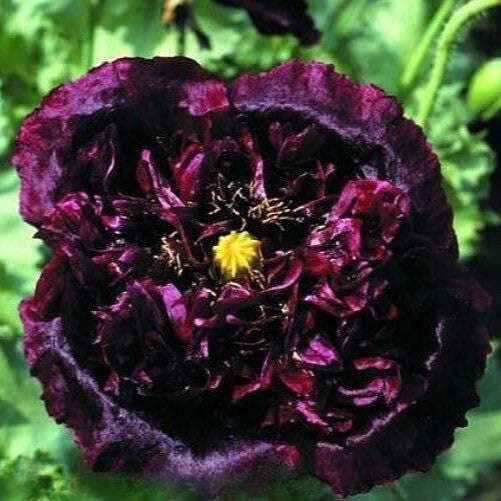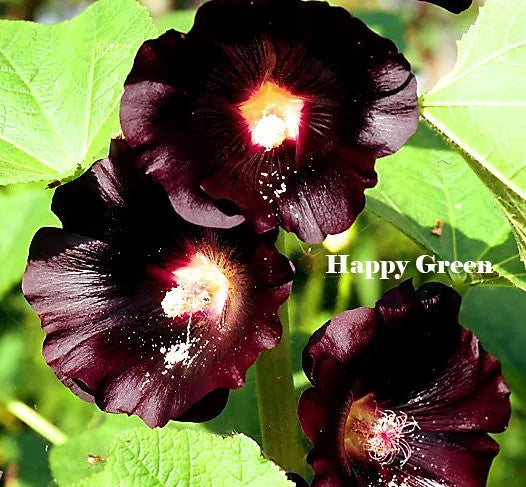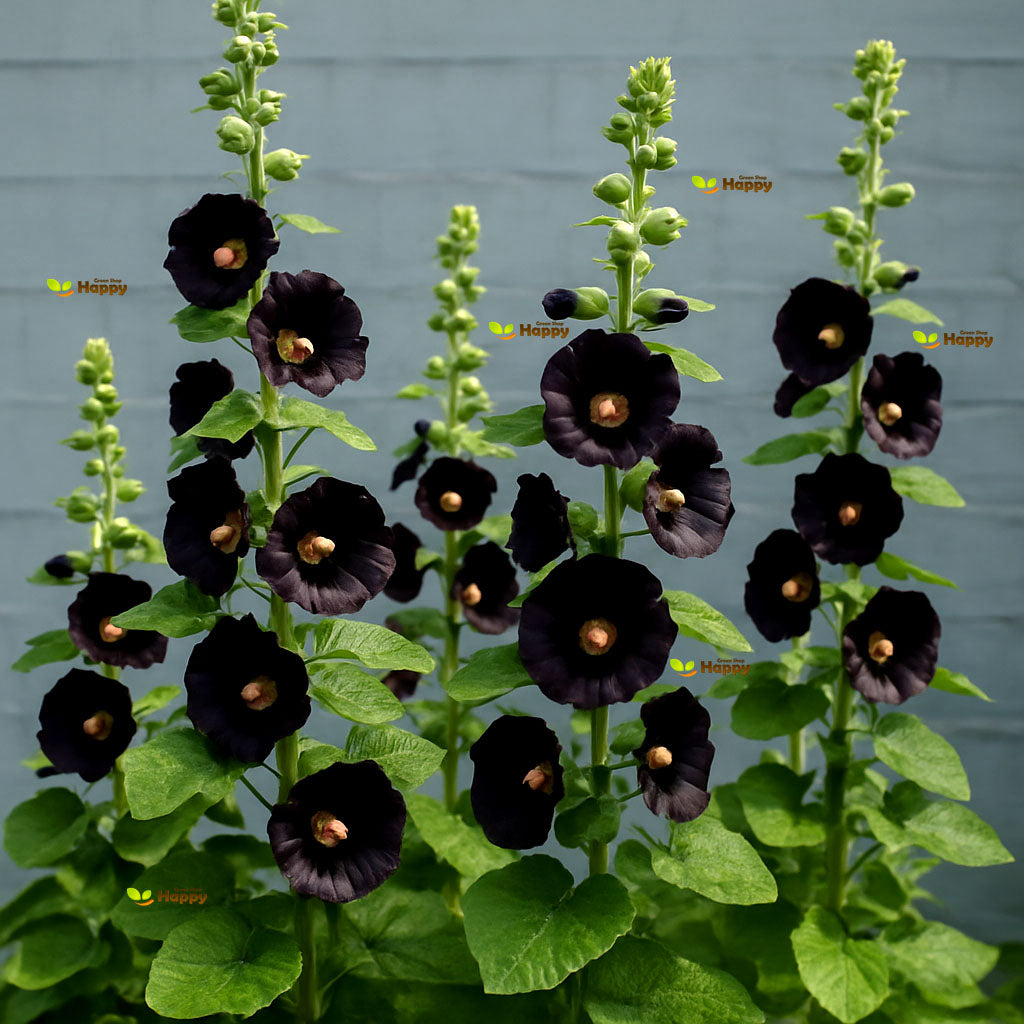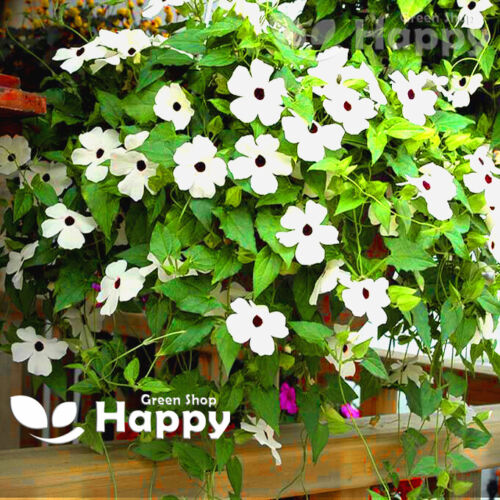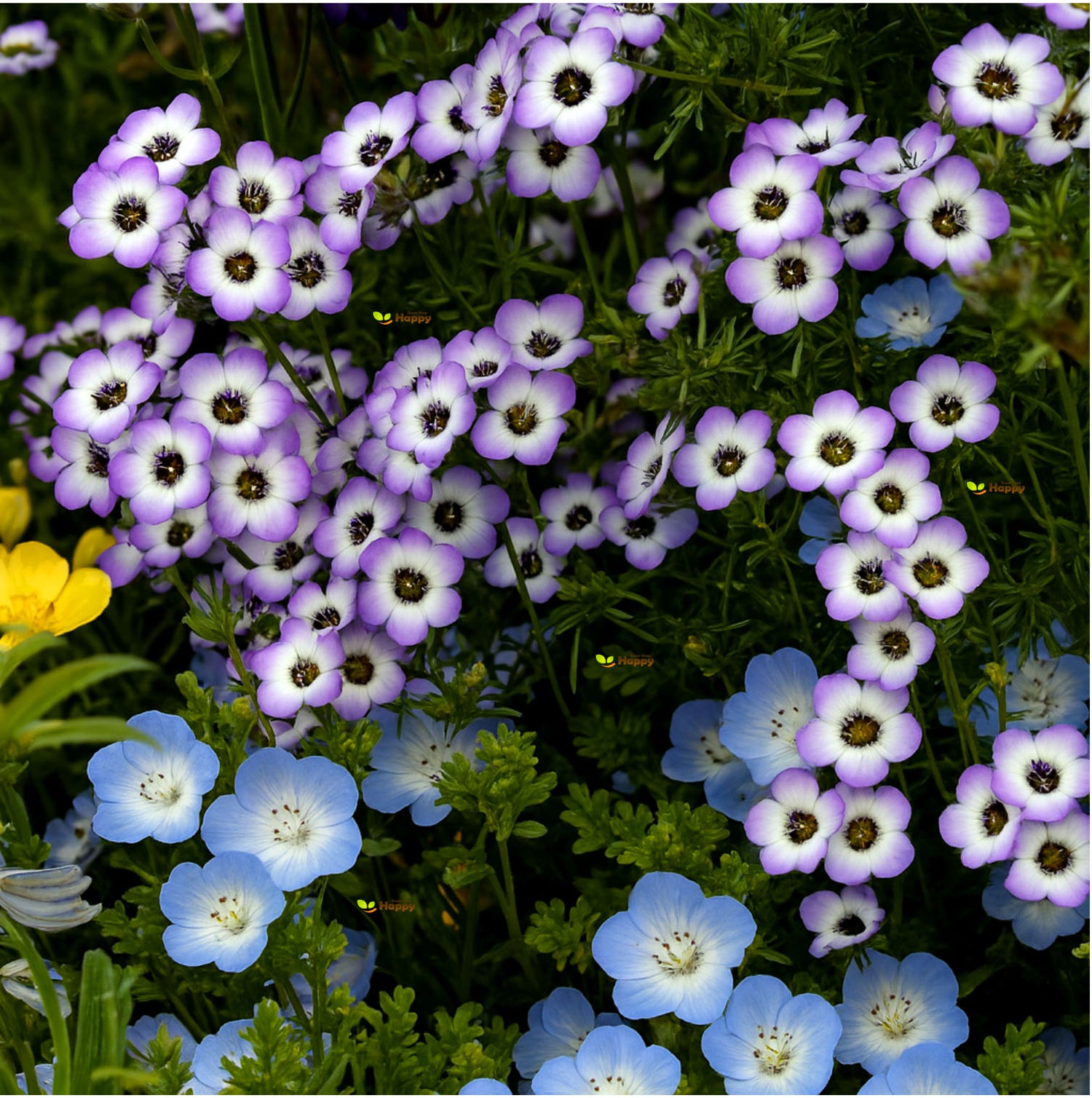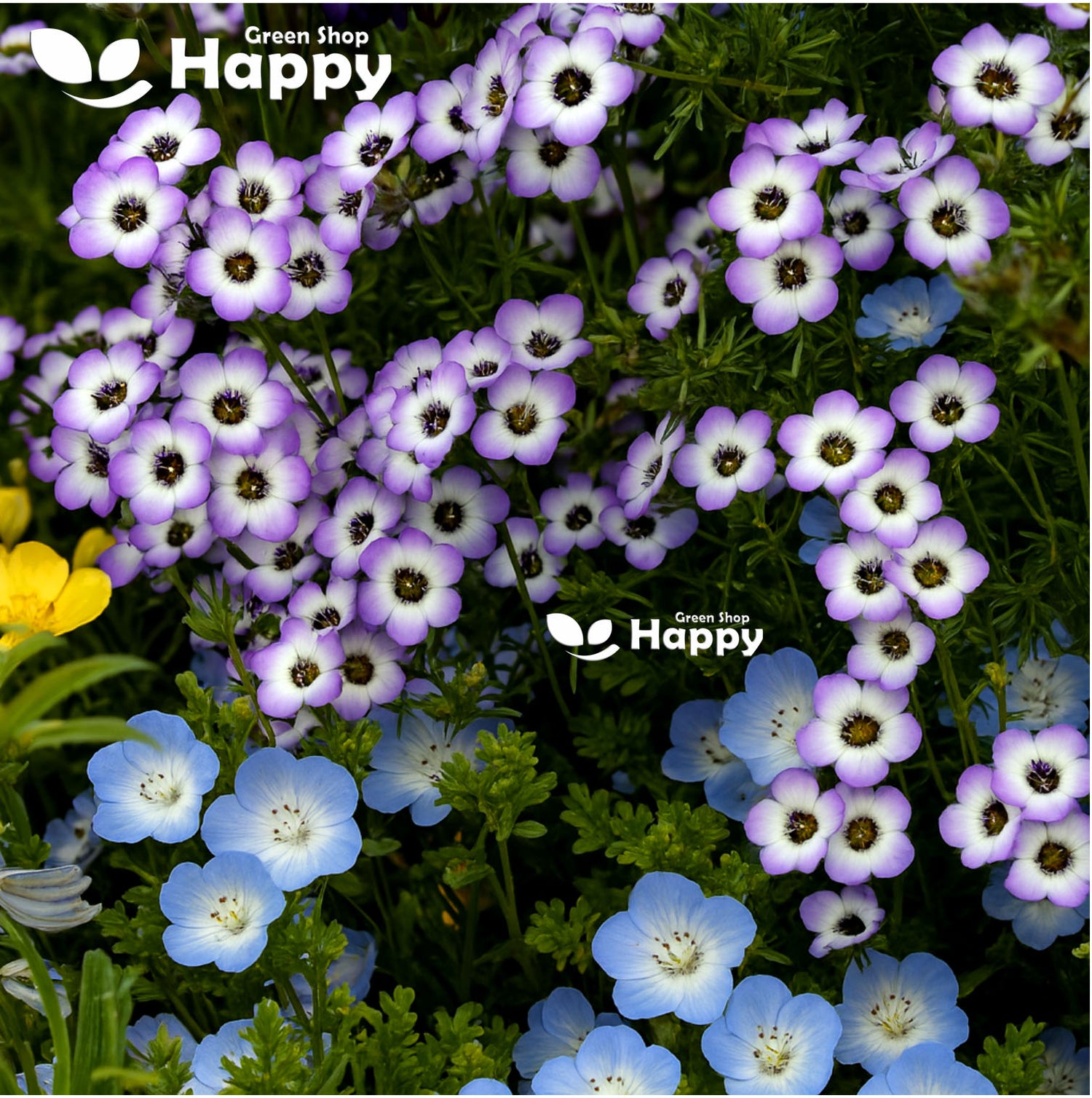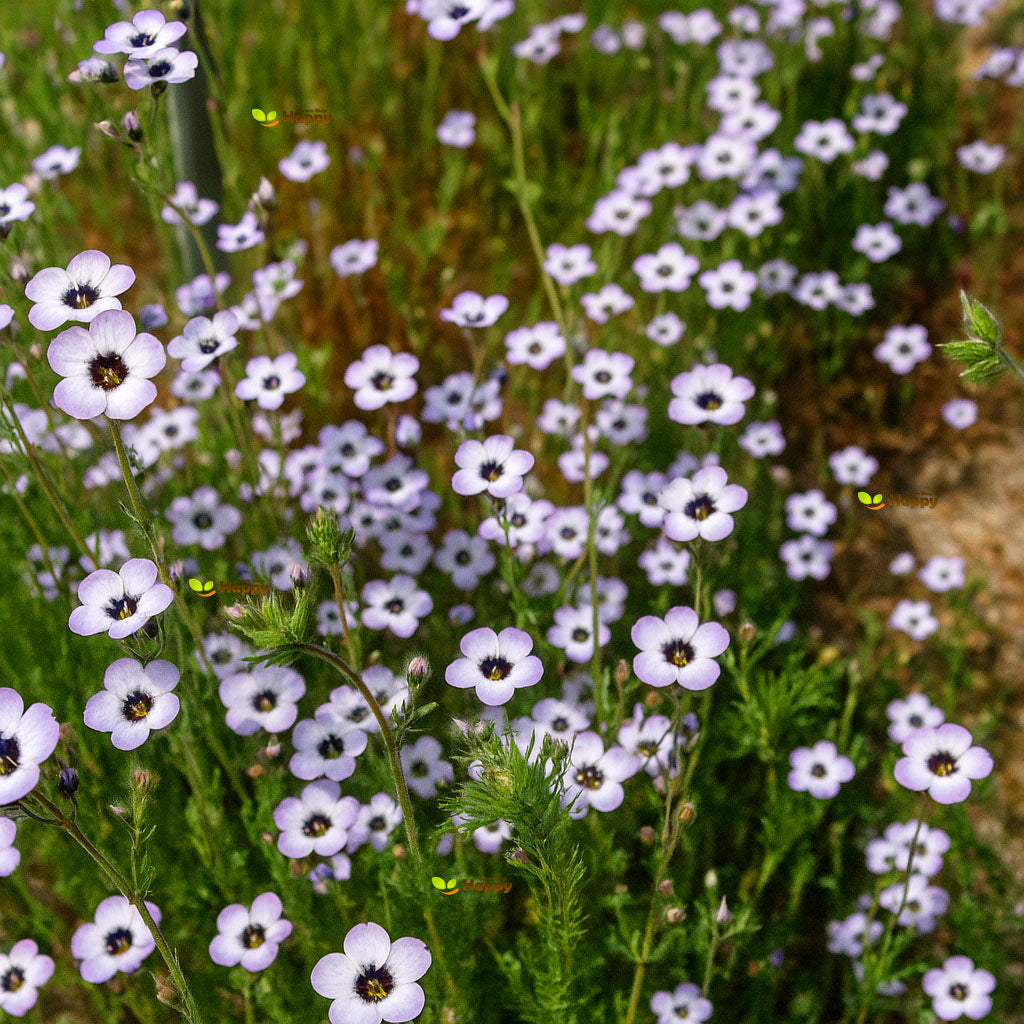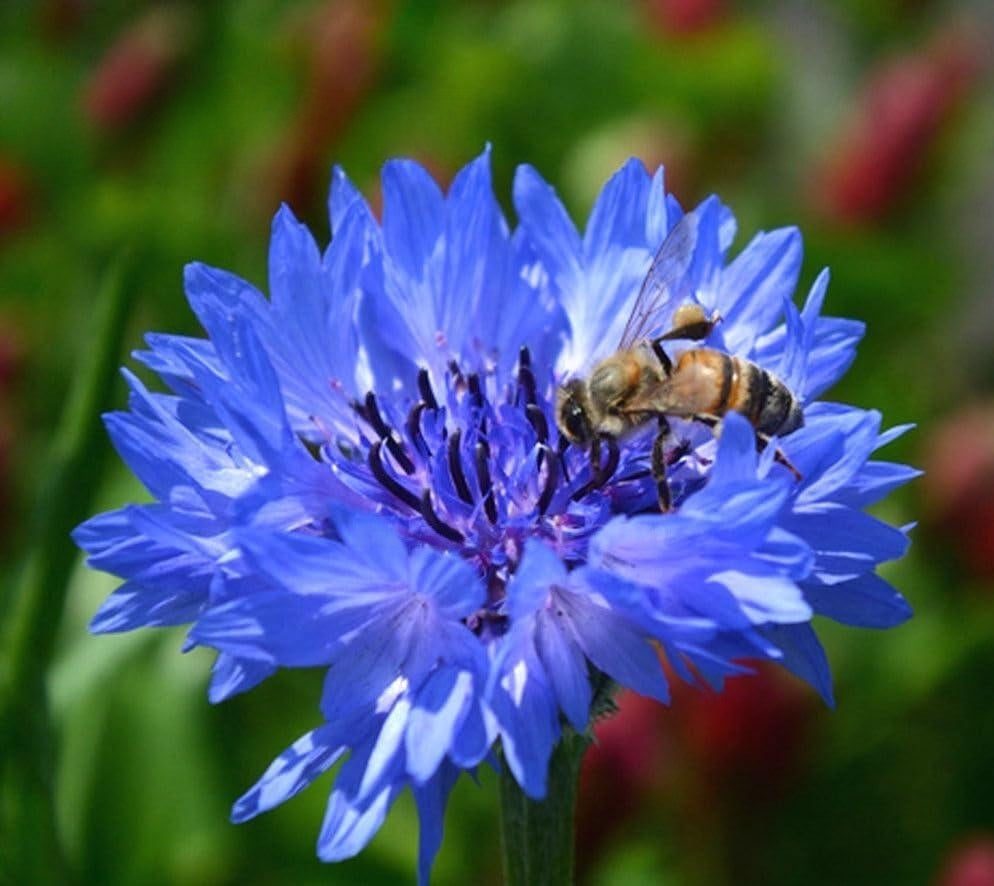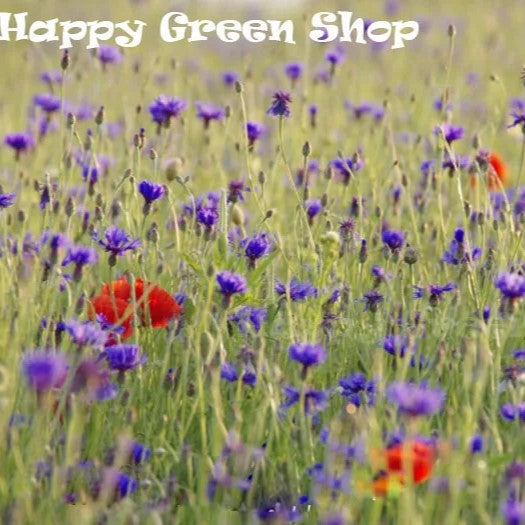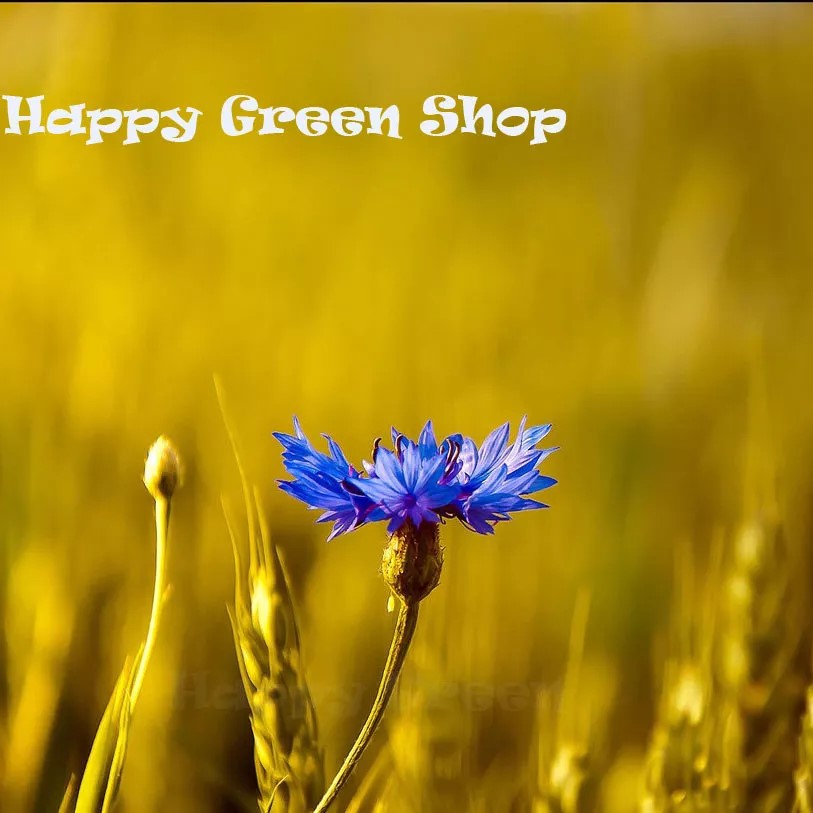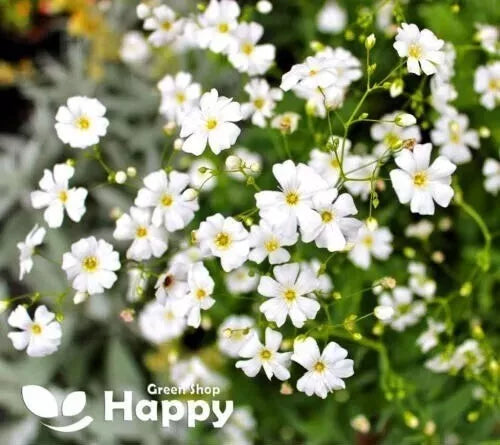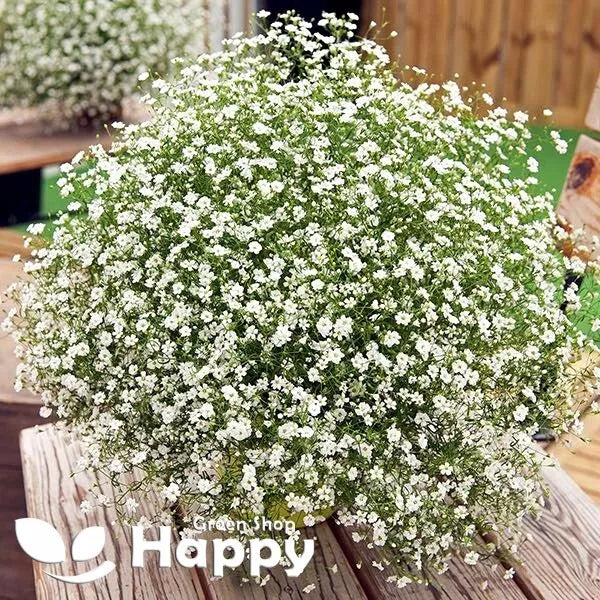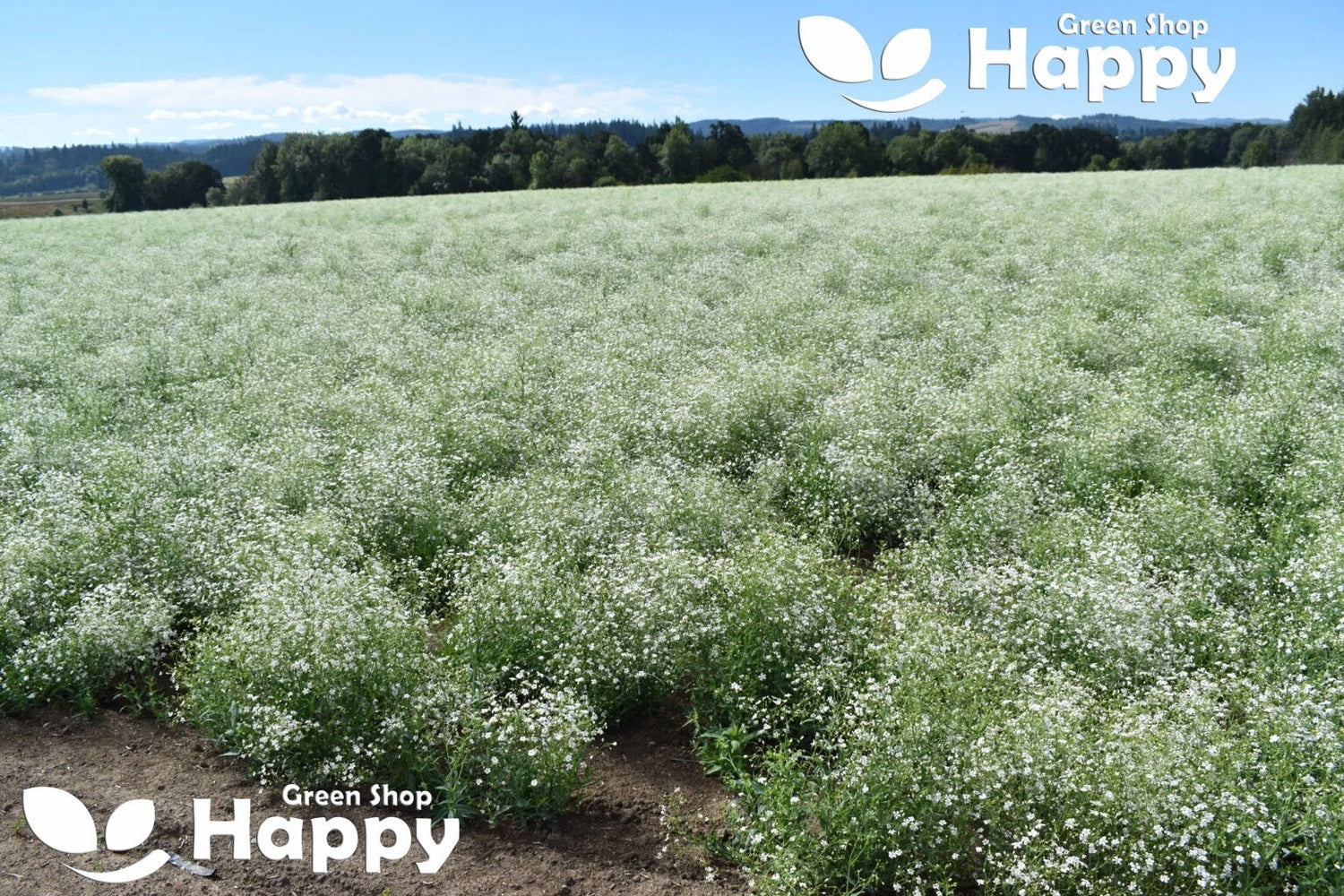Sort by:
27 products
27 products
Blue Tansy Lacy Seeds (Phacelia tanacetifolia)
Blue Tansy Lacy is an annual flowering plant celebrated for its delicate, lacy foliage and vibrant blue flowers. This fast-growing plant is a favorite for pollinator gardens, attracting bees, butterflies, and other beneficial insects. Its feathery foliage and bright blooms also make it excellent for borders, wildflower meadows, and cut-and-dried arrangements.
What Makes It Special
-
Stunning sky-blue flowers on tall, graceful stems
-
Lacy, aromatic foliage adds texture and interest to the garden
-
Highly attractive to bees and other pollinators
-
Quick to establish and easy to grow from seed
Key Features
-
Botanical name: Phacelia tanacetifolia
-
Common name: Blue Tansy, Lacy Phacelia
-
Seed count: Approx. seeds per pack
-
Height/Spread: 60–90 cm tall, 30–40 cm spread
-
Position: Full sun, well-drained soil
-
Flowering period: Summer
-
Lifespan: Annual
Ideal For
-
Pollinator and wildlife gardens
-
Borders, meadows, and naturalistic plantings
-
Cut flower and dried arrangements
-
Companion planting to improve soil and attract beneficial insects
Sowing Instructions
-
When to sow: March–May outdoors, or start indoors 4–6 weeks earlier
-
How to sow:
-
Sow thinly in prepared, well-drained soil
-
Lightly cover with soil (0.5 cm)
-
Keep soil moist until seedlings emerge (7–14 days)
-
-
Spacing: Thin to 30–40 cm apart once established
-
Care: Low-maintenance; tolerant of poor soils and drought once established. Deadhead to prolong flowering.
Blue Lace Flower Seeds (Didiscus caeruleus / Trachymene caerulea)
The Blue Lace Flower is an elegant and delicate annual, much loved for its airy umbels of soft sky-blue blossoms. Each flower head resembles lacework, carried on long slender stems, making it ideal for cutting. With its light, lacy texture, this plant brings charm and movement to borders, cottage gardens, and wildflower-style plantings. It is also a superb choice for floral arrangements, both fresh and dried.
What Makes It Special
-
Produces lace-like umbels of pastel blue blooms
-
Excellent cut flower with a long vase life
-
Attractive to bees, butterflies, and pollinators
-
Adds a soft, romantic touch to borders and bouquets
Key Features
-
Botanical name: Didiscus caeruleus / Trachymene caerulea
-
Common name: Blue Lace Flower
-
Seed count: Approx. seeds per pack
-
Height/Spread: 45–60 cm tall, 20–30 cm spread
-
Position: Full sun, well-drained soil
-
Flowering period: Summer to early autumn
-
Lifespan: Half-hardy annual
Ideal For
-
Cottage gardens
-
Wildflower meadows
-
Borders and mixed beds
-
Cut flower and dried arrangements
-
Pollinator-friendly gardens
Sowing Instructions
-
When to sow: March–May indoors, or April–June outdoors after frost has passed
-
How to sow:
-
Sow seeds thinly in trays with seed compost or directly outdoors in fine soil
-
Lightly cover seeds with a thin layer of soil or vermiculite
-
Keep moist until seedlings appear (14–21 days)
-
-
Transplant/Thin: Space plants 20–30 cm apart
-
Care: Deadhead to prolong flowering; provide support in windy sites
“Blindeyes” Poppy – Seeds (Papaver dobium)
Description:
Add delicate charm to your garden with “Blindeyes” Poppy (Papaver dobium). This striking annual produces elegant, cup-shaped blooms in shades of white or pale pink with a dark central “eye,” giving it its distinctive name. Perfect for borders, cottage gardens, and wildflower meadows, these poppies attract pollinators and bring a soft, whimsical touch to any garden. Easy to grow from seed and long-flowering, they are ideal for both naturalistic and formal plantings.
Key Features
-
Elegant cup-shaped blooms with a dark central “eye”
-
Annual variety, easy to grow from seed
-
Long-lasting blooms from late spring to summer
-
Attracts bees and pollinators
-
Adds delicate charm to borders and meadows
Ideal For
-
Borders and mixed flower beds
-
Cottage and wildflower gardens
-
Pollinator-friendly plantings
-
Naturalistic or whimsical garden displays
Sowing & Growing
-
Sow Outdoors: March–April
-
Germination: 7–14 days at 15–20°C
-
Height: 40–50 cm
-
Spacing: 20–25 cm apart
-
Light: Full sun
-
Soil: Well-drained, moderately fertile
Care Tips
-
Water lightly until seedlings establish
-
Deadhead faded flowers to encourage prolonged blooming
-
Avoid overwatering to prevent root rot
-
Allow some self-seeding for future seasons
Black Peony Poppy – Seeds (Papaver paeoniflorum)
Black Peony Poppy (Papaver paeoniflorum) is a striking annual known for its large, double-layered deep black blooms. Its dramatic flowers create a bold statement in borders, cottage gardens, and cutting gardens. Easy to grow and long-flowering, this poppy adds a unique, elegant touch while attracting pollinators to your garden.
Why Grow "Black Peony Poppy"
-
Large, double deep black blooms
-
Long flowering period from late spring to early summer
-
Adds a dramatic, elegant accent to gardens
-
Attracts bees and butterflies
Key Features
-
Type: Annual (Papaver paeoniflorum)
-
Height: 50–70 cm
-
Flowering: May–July
-
Position: Full sun
-
Uses: Borders, cottage gardens, cutting gardens, pollinator-friendly planting
Ideal For
-
Dramatic focal points in borders and beds
-
Cottage-style and romantic gardens
-
Cutting gardens for unique bouquets
-
Pollinator-friendly gardens
Sowing & Growing
-
Sow outdoors: March–May directly in prepared soil
-
Germination: 10–20 days at 15–20°C
-
Thin seedlings to 20–30 cm apart
-
Prefers full sun and well-drained soil
-
Deadhead to prolong flowering
Black Hollyhock – Seeds (Althaea rosea nigra)
Black Hollyhock (Althaea rosea nigra) is a striking biennial producing tall spikes of deep, dark purple to almost black double blooms. Its dramatic flowers create a bold focal point in borders, cottage gardens, and pollinator-friendly areas. Easy to grow and long-lasting, this variety attracts bees and butterflies while adding elegance and vertical interest to any garden.
Why Grow "Black Hollyhock"
-
Tall spikes of deep purple to nearly black flowers
-
Dramatic focal point for borders and cottage gardens
-
Attracts bees, butterflies, and other pollinators
-
Hardy biennial with long-lasting blooms
Key Features
-
Type: Biennial (Althaea rosea nigra)
-
Height: 1.8–2.0 m
-
Flowering: Second year after sowing
-
Position: Full sun
-
Uses: Borders, cottage gardens, pollinator planting, cut flowers
Ideal For
-
Creating vertical interest and dramatic color in borders
-
Cottage and mixed garden designs
-
Pollinator-friendly planting
-
Gardeners seeking bold, elegant biennial flowers
Sowing & Growing
-
Sow indoors: January–March
-
Sow outdoors: Directly in soil April–May
-
Germination: 14–21 days
-
Plant out after last frost, spacing 45–60 cm apart
-
Prefers full sun and well-drained soil
Black-Eyed Susan White Seeds (Thunbergia alata)
Black-Eyed Susan White is a vigorous, climbing annual producing striking white flowers with contrasting dark centers. Its trailing and twining habit makes it perfect for trellises, fences, arbors, and containers. Loved for its long flowering season and fast growth, it adds vertical interest and bright, cheerful color to any garden.
What Makes It Special
-
Bright white flowers with contrasting dark centers
-
Vigorous climbing and trailing growth ideal for vertical displays
-
Long-flowering, providing summer and autumn color
-
Attracts pollinators such as bees and butterflies
Key Features
-
Botanical name: Thunbergia alata
-
Variety: White
-
Seed count: Approx. seeds per pack
-
Height/Spread: Climbs 1.5–2.5 m; spread depends on support
-
Position: Full sun to partial shade; fertile, well-drained soil
-
Flowering period: June–October
Ideal For
-
Trellises, fences, arches, and arbors
-
Hanging baskets and containers with support
-
Vertical interest in garden beds and borders
-
Pollinator-friendly gardens
Sowing Instructions
-
When to sow: February–April indoors; March–May outdoors
-
How to sow:
-
Sow seeds 0.5–1 cm deep in pots or seed trays
-
Germination in 10–14 days at 20–25°C
-
-
Transplanting: Plant outdoors after frost, spacing 25–30 cm apart with support
-
Care: Water regularly; provide trellis or support for climbing; deadhead to prolong flowering
Bird’s Eyes – Seeds
(Gilia tricolor)
Bird’s Eyes (Gilia tricolor) is a delightful annual wildflower producing masses of small, trumpet-shaped blooms in shades of purple, lavender, and cream with golden throats. Compact and bushy, this variety creates cheerful, nectar-rich displays that attract bees and butterflies, perfect for naturalistic plantings and wildflower gardens.
Why Grow Bird’s Eyes?
-
Charming pastel blooms with golden centers
-
Compact and easy to grow annual
-
Excellent for pollinators
-
Long flowering season for summer color
Key Features
-
Type: Hardy annual
-
Height: 20–40 cm
-
Flowers: Late spring to summer
-
Position: Full sun
-
Soil: Light, sandy, well-drained
Ideal For
-
Wildflower gardens and meadows
-
Cottage garden borders
-
Pollinator-friendly planting
-
Containers and small garden spaces
Sowing & Growing
-
Sow outdoors: March–May or in autumn where they are to flower
-
Germination: 14–21 days at 15–20°C
-
Thin seedlings to 15–20 cm apart
-
Care: Prefers poor soils, minimal feeding required
Bachelor’s Button ‘Blue Boy’ – 1,200 Seeds (Centaurea cyanus)
Bachelor’s Button ‘Blue Boy’ (Centaurea cyanus) is a charming annual producing striking cornflower-blue blooms with a classic, dainty appearance. Perfect for borders, meadows, and cutting gardens, it adds vibrant color from late spring to summer. Easy to grow and long-flowering, it attracts pollinators while creating a nostalgic, cottage-garden feel.
Why Grow "Blue Boy"
-
Bright cornflower-blue blooms
-
Long flowering season from late spring to summer
-
Easy to grow and low-maintenance
-
Attracts bees and butterflies
Key Features
-
Type: Annual (Centaurea cyanus)
-
Height: 40–80 cm
-
Flowering: May–August
-
Position: Full sun
-
Uses: Borders, meadows, cutting gardens, pollinator-friendly planting
Ideal For
-
Cottage-style gardens
-
Cutting gardens for fresh bouquets
-
Pollinator-friendly landscapes
-
Meadows and naturalized borders
Sowing & Growing
-
Sow outdoors: March–May directly in prepared soil
-
Germination: 7–14 days at 15–20°C
-
Thin seedlings to 20–25 cm apart
-
Prefers full sun and well-drained soil
-
Deadhead to encourage prolonged flowering
Baby’s Breath White – Seeds (Gypsophila elegans)
Baby’s Breath White (Gypsophila elegans) is a delicate annual prized for its airy sprays of tiny, pure white flowers. Blooming from early summer to autumn, it adds soft, cloud-like texture to borders, cottage gardens, and mixed flower beds. Perfect for cut flower arrangements and bouquets, this low-maintenance variety also attracts pollinators, making it a versatile and charming addition to any garden.
Why Grow "Baby’s Breath White"
-
Airy sprays of tiny, pure white flowers
-
Long flowering season from early summer to autumn
-
Easy-to-grow, low-maintenance annual
-
Ideal for cut flowers and pollinator-friendly gardens
Key Features
-
Type: Annual (Gypsophila elegans)
-
Height: 30–50 cm
-
Flowering: Early summer to autumn
-
Position: Full sun
-
Uses: Borders, cottage gardens, mixed beds, cut flowers, pollinator gardens
Ideal For
-
Softening borders and mixed flower beds
-
Cottage-style gardens
-
Bouquets and cut flower arrangements
-
Pollinator-friendly garden designs
Sowing & Growing
-
Sow indoors: February–April in trays or pots
-
Sow outdoors: March–May directly in soil
-
Germination: 10–20 days at 18–22°C
-
Thin seedlings 25–30 cm apart
-
Prefers well-drained soil in full sun
-
Water moderately until established
Showing 18/27




